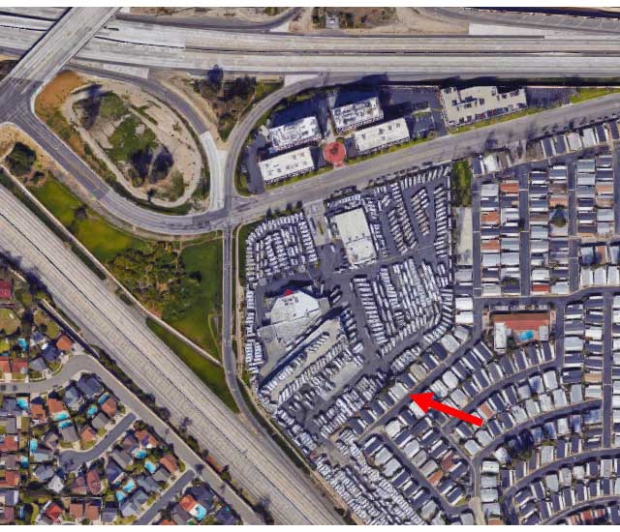I polled you all recently, listing 8 factors I felt were important to athletic success. Over 1,300 of you answered, and pretty much none of you thought that Physical Training Location, or Access to Training Partners, or Technical Grasp of Sport, the single most important element.
I have less confidence in today’s installment than any I’ve already written, or any that I’m going to write. I just can’t get inside the heads of good athletes, to know what motivates them. I can only write for myself, or report on the habits and performance of other athletes.

It has been a lifelong theme of mine to live proximate to where I run, ride and swim. It’s a judgment I make. I’m willing to earn less money, suffer bad internet access, have fewer friends close to me, live farther from shopping or culture or restaurants, so that I can live where I recreate. Yes, I'm a weirdo. But am I an outlier?
When I do look at good athletes, they tend to aggregate in places good for training: Boulder, Bend, San Diego. However, when I look at the countries who routinely produce the best age group athletes, and see where those athletes come from, I note that sub-tropical weather is not what you think of when contemplating Germany. That said, I found Germany a terrific, triathlon-friendly training base (better roads for cycling, etc.). So I just don’t know, but in my view this is 5th on the list of the 8 important elements to success.
Now, having said all this(!) I must confess something to you. The fastest I ever got, afoot, not counting my semi-prodigy high school days, was when I rented a room in some fellow’s mobile home. Yes. Not rented a mobile home. Rented a room in a mobile home. It’s what I could afford at the time. This was in the early 1980s, and this mobile home backed up to a car dealership that was itself situation at the confluence of two freeways in the Los Angeles area: the Garden Grove Fwy (#22) and the San Diego Fwy (405). Satellite image below of the location of my trailer bedroom (roughly).

Were I to tell you all the conditions of that time of my life it would read pretty grim. But, I had a routine: My runs consisted almost entirely of 32-minute efforts: I ran out 16 minutes, noted where it took me – I marked that spot – and then ran back. The goal was to extend my turnaround spot, but I didn’t consider it a “legal” PR unless my return time was equal to or faster than my outbound time. Sometimes I’d do this run effort twice a day, morning and evening.
Needless to say, I would not recommend this training plan. Nevertheless, it worked. Sort of. Notwithstanding the fact that there was no moment when the air wasn’t full of car traffic and, I suspect, car exhaust, as I lived closer to more cars over a 24hr period than just about anyone anywhere. So, there you go, the worst living spot of my life; the worst living spot I can imagine; and yet the scene of my best-ever running.
On the other hand, it wasn’t that bad. This all took place at a particular moment in the history of running, which Dave Jewell discusses in Part-2 of his 3-part series on running technology and nomenclature. I remember the early 80s as a vibrant, busy time in road running. I have the results of the 1979 Nike OTC Marathon, where more than 100 Americans – not runners, but American runners – broke 2:30 in a singlerace! Can you imagine that happening today?
Here’s how fast it was back then. In 1984, I think it was, I got 4th or 5th place in the Seal Beach 10k, a race with about 2,000 runners, and I ran 32:48. Let’s fast forward to 2010 or 2011, I finished in the same place, overall, in that same race, same course, same rough number of competitors, almost 30 years later, and I ran 38:08. My time in the early 80s would have won that race by 2 minutes. That’s how much faster your typical road races were in the early 80s. (By the way, I know how fast I was in the old days; and how fast I wasn't. Fellow triathlete Ruben Chappins would routinely show up at the no-money SoCal 10k footraces and run right around 30-flat, and he was just one of a lot of really fast weekenders).
What I had going for me, in the early 80s, was good year round weather, and access to great races, great performers, many runners faster than I was, all the time. (There’s a hint in there about how I rank certain of my list of 8 elements for success.)
To recap, here is the question I asked: "Which attribute is the most important, most often, for most people (pros and AGers), for success in triathlon at the 70.3 distance and up?"
Here is how your answers ranked:
1. Work ethic and personality
2. Genetic gifts
3. Specific training regime
4. Financial means
5. Youth sports background
6. Physical training location
7. Access to training partners
8. Technical grasp of sport
Here’s how I ranked them, so far:
5. Physical training location (today's installment)
6. Technical grasp of sport
7. Financial means
8. Specific training regime
Next up is what I place 4th on my countdown of important elements of success.



